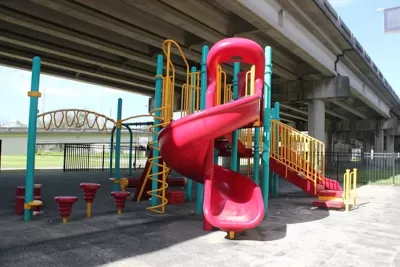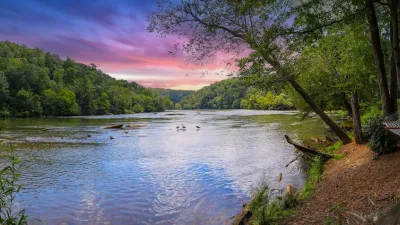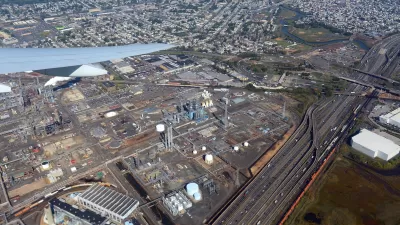A local coalition is collecting data that proves the harmful impacts of the Claiborne Expressway on the surrounding community.

In a story for NPR, Drew Hawkins describes the toxic legacy of a New Orleans highway that mars a neighborhood in the city’s 7th Ward.
As an effort to reconnect the neighborhood and provide public space, the city built a playground dubbed Hunter’s Field directly under a Claiborne Expressway overpass. Nine years later, “Children don't come here to play.”
The park was part of a city-state effort to rectify some of the damage of the expressway, which decimated a once-vibrant community corridor. But “That plan wouldn't move the freeway out of the neighborhood, but would pay for repairs and maintenance work on the existing stretch of highway, and to try to spruce up the desolate area underneath the highway by building a public market and performance space.” Local activist and urban designer Amy Stelly calls the public market component “misguided and ridiculous,” saying that “It's not a wise decision to build anything under here” because of the noise and pollution created by the roadway above.
The organization Stelly works with, the Claiborne Avenue Alliance, is hoping to prove their point with science by collecting data on harmful pollutants and noise to call for the complete removal of the expressway. For advocates like the Alliance, “Removal is the only cure.”
FULL STORY: A New Orleans neighborhood confronts the racist legacy of a toxic stretch of highway

Alabama: Trump Terminates Settlements for Black Communities Harmed By Raw Sewage
Trump deemed the landmark civil rights agreement “illegal DEI and environmental justice policy.”

Study: Maui’s Plan to Convert Vacation Rentals to Long-Term Housing Could Cause Nearly $1 Billion Economic Loss
The plan would reduce visitor accommodation by 25% resulting in 1,900 jobs lost.

Planetizen Federal Action Tracker
A weekly monitor of how Trump’s orders and actions are impacting planners and planning in America.

Restoring Northern India’s Himalayan ‘Water Temples’
Thousands of centuries-old buildings protect the region’s natural springs and serve as community wells and gathering places.

Milwaukee to Double Bike Share Stations
Bublr Bikes, one of the nation’s most successful, will add 500 new e-bikes to its system.

DC Extends Application Window for Outdoor Dining Permits
District restaurants will have until the end of November to apply, but businesses with permits in rush hour parking lanes must end operations on July 31.
Urban Design for Planners 1: Software Tools
This six-course series explores essential urban design concepts using open source software and equips planners with the tools they need to participate fully in the urban design process.
Planning for Universal Design
Learn the tools for implementing Universal Design in planning regulations.
Caltrans
Smith Gee Studio
Institute for Housing and Urban Development Studies (IHS)
City of Grandview
Harvard GSD Executive Education
Toledo-Lucas County Plan Commissions
Salt Lake City
NYU Wagner Graduate School of Public Service




























